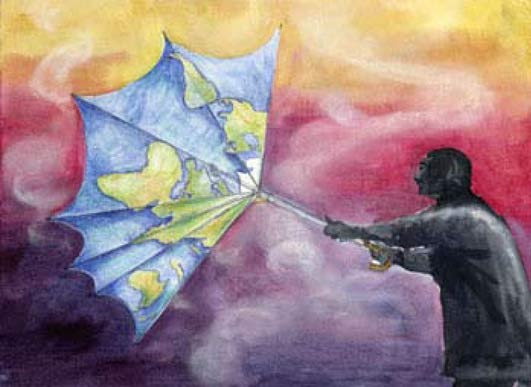In the wake of a deadly pandemic there’s some off-shoot positive news impacting the climate — magnitude fairly strong considering such a short time span, according to the New York Times yesterday:
Global greenhouse gas emissions are on track to plunge nearly 8-percent this year, the largest drop ever recorded, as worldwide lockdowns to fight the coronavirus have triggered an “unprecedented” decline in the use of fossil fuels, the International Energy Agency said in a new report on Thursday.
But experts cautioned that the drop should not be seen as good news for efforts to tackle climate change.
When the pandemic subsides and nations take steps to restart their economies, emissions could easily soar again unless governments make concerted efforts to shift to cleaner energy as part of their recovery efforts.More than 4 billion people are living in countries that have imposed partial or more extensive shutdowns on economic activity to slow the spread of the virus.
By mid-April, the report found, energy use in many of those countries was 17-percent to 25-percent lower than it was in 2019, as factories idled, employees stopped driving to work and airlines grounded their flights.
And this exchange of good-bad: ‘If countries remain locked down for longer than expected, or if businesses struggle to recover from the pandemic, the drop in emissions could be larger. By contrast, getting the virus under control faster would mean a smaller dip in emissions this year.‘
Yet the heat continues, last month the second-hottest March on record, or ever, and 2020 supposedly on track to maybe be in the top-five all-time hot years — climate change/global warming continues to surge toward us..
However, what if the increasing heat makes a coronavirus even worse — Scientific American from this past Wednesday:
Scientists have long known that the rise in average global temperatures is expanding the geographical presence of vector-borne diseases such as malaria and dengue fever, because the animals that transmit them are adapting to more widespread areas.
The link between respiratory illnesses, including influenza and COVID-19, and a warming planet is less clear.
But some scientists are concerned that climate change could alter the relationship between our body’s defenses and such pathogens.
These modifications could include the adaptation of microbes to a warming world, changes in how viruses and bacteria interact with their animal hosts, and a weakened human immune response.
…
“Imagine that the world is hotter and that lizards adapt to live in temperatures very close to yours. Then their viruses adapt to higher temperatures,” Casadevall says. (Arturo Casadevall, chair of molecular microbiology and immunology at the Johns Hopkins Bloomberg School of Public Health).
“We have two pillars of defense: temperature and advanced immunity. In a warming world, we may lose the pillar of temperature if the [pathogens] adapt to be close to our temperature.”
And Ellen F. Foxman, an assistant professor of laboratory medicine and immunobiology at the Yale School of Medicine: ‘“I think that climate change disrupts a lot of patterns — of human behavior, of insect vectors and even [of] bats”—from which the COVID-19 virus and other deadly coronaviruses likely originated, Foxman says. The disruptions could indirectly alter the interactions between diseases and human defenses in ways scientists have yet to fully understand.‘
Mystery days…
 (Illustration from the UN’s International Children’s Painting Competition, and found here).
(Illustration from the UN’s International Children’s Painting Competition, and found here).